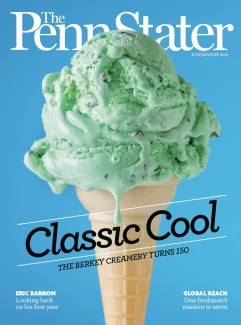The Original
From our July/August '15 issue: The year 1865 was a time of national unrest, with the Civil War drawing to a close, but the country was hopeful, and ready for change. During that time, a tiny land-grant college called the Farmers’ High School in State College, Pa., just 10 years old, acquired a small herd of cows and went into dairy farming. This is the story of the Creamery’s first 150 years.




